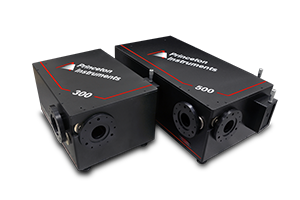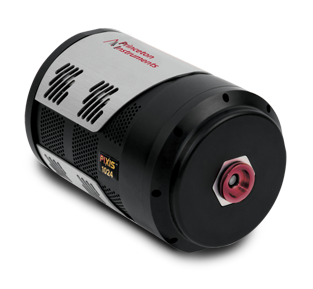Petro Maksymovych
Nature Communications
Piezoelectric domain walls in van der Waals antiferroelectric
Introduction
Optical spectroscopy plays a significant role in material science and researching properties of 2D materials. Raman and second harmonic generation spectroscopy shed light on the structure of materials and require sensitive detection using scientific spectroscopy systems.
2D materials are a class of materials that can be produced in atomically thin, crystalline layers (down to single atomic layer thickness). Graphene, transition metal dichalcogenides and other 2D materials have shown to have unique physical properties that make them appealing for development of new, enhanced electrical and optoelectronic devices. Over the past decade researchers have also started to build layered structures of 2D materials (sometimes referred to as vander Waals heterostructures) to build new devices for studying new physical effects or practical applications. Detailed knowledge of the individual materials is necessary to consider their use for new, interesting applications.
Researchers from Vilnius University (Lithuania) and Oak Ridge National Laboratory (USA) are studying a class of materials called thiophosphates for their ferroelectric properties and utilization of these properties in 2D vander-Waals heterostructures. Ferroelectric materials in analogy to ferromagnetic materials can possess an oriented, permanent electric polarization that can be changed with an electric field. The ferroelectric behavior is temperature dependent (with temperature being below a transition temperature for order to occur) and for thiophosphates it can also be studied as a function of thickness, where the material might prefer ferroelectric order or antiferroelectric order.
There also can be nanoscale ferro and antiferroelectric domains coexisting. The researchers are interested in understanding exactly the properties of thiophosphates on the nanoscale to “help to identify the possible mechanisms by which these materials can be functional in van der Waals heterostructures”.

The team uses a piezo response force microscopy (similar to AFM, but sensitive to electric polarization) to characterize thiophosphates, but the observations are supported by sensitive Raman spectroscopy and second harmonic generation spectroscopy as a function of temperature. Optical spectroscopy has always been one of the main characterization tools to characterize the structure of 2D materials and interactions of electrons and atoms in their crystal lattice. Both Raman spectroscopy and second harmonic generation spectroscopy are sensitive to the structure of materials. Raman measures the inelastic scattering from vibrational modes of the crystal lattice, while existence of SHG indicates a breaking of inversion symmetry which would imply some form of ordering in the probed volume for ferroelectric materials.
For Raman spectroscopy the researchers use a 532nm laser for excitation which is being kept in at a low power of 100µW. It is often important to work with low laser powers when studying materials to avoid effects from heating the sample or risking damage. However, signal levels will be low requiring sensitive detection of the Raman scattered light. For SHG a 50fs at 800nm and 80MHz rep rate with 0.1W of energy at the sample is used for excitation. In both cases appropriate filters block scattered light at the excitation wavelength.
In both situations a SpectraPro spectrograph with 300mm focal length and a PIXIS camera are used for spectroscopic detection. The researchers use the ability of this system to adapt to various experimental conditions. The spectrograph turret holds several gratings to optimize resolution and grating efficiency for either measurement. The scientific CCD camera is suitable for detecting ultra-low light level signals with high sensitivity and/or signals that require a high dynamic range, so optimal conditions for Raman and SHG measurements can be achieved.


